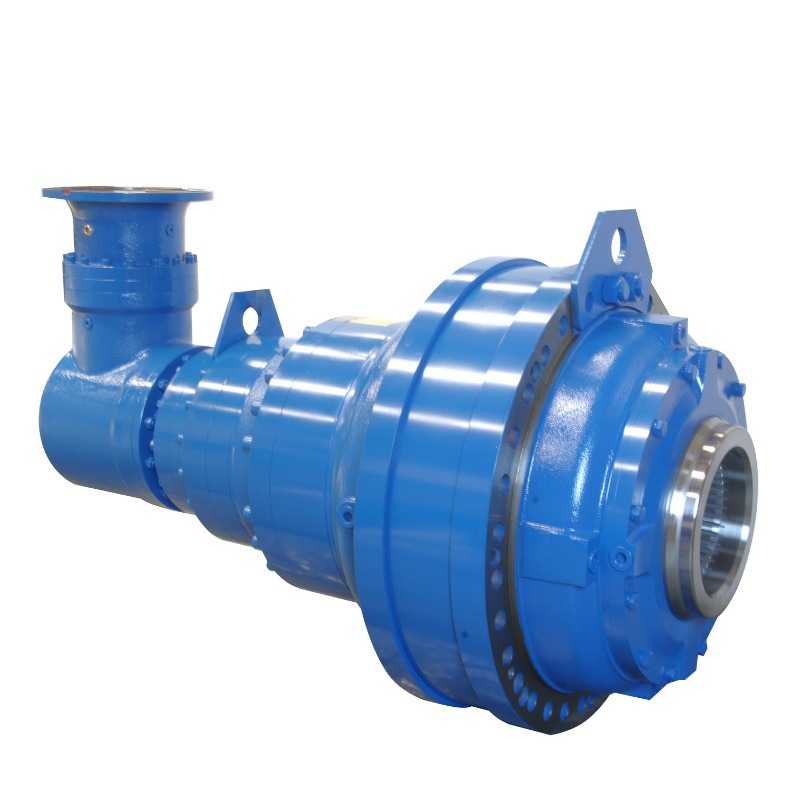SGR's N Series high torque coaxial planetary gearbox Input forms: N standard shaft input, MN flange ...
See DetailsThe planetary gearbox, also known as an epicyclic gearbox, is a cornerstone of modern mechanical engineering. Renowned for its compact design, high torque density, and exceptional efficiency, this type of gear system is indispensable in a vast array of industries. Its unique architecture, featuring gears that orbit around a central axis, allows it to achieve performance characteristics that are often unattainable with other gear types. This article provides an in-depth exploration of planetary gear systems, delving into their fundamental principles, key benefits, diverse applications, and critical selection criteria to guide engineers and enthusiasts alike.
A planetary gear system is arranged with one or more "planet" gears revolving around a central "sun" gear. These planet gears are mounted on a carrier and are simultaneously meshed with an outer ring gear. This concentric arrangement allows for multiple configurations of input and output, enabling a wide range of speed, torque, and direction combinations from a single system. The compact nature of this design, where power is distributed across several planet gears, is the primary source of its remarkable strength and durability.
The widespread adoption of planetary gearboxes across demanding sectors is a direct result of their compelling set of advantages. These benefits stem from their fundamental design, which efficiently distributes load and minimizes size without sacrificing performance.

Flange Input Right Angle Big Output Torque Planetary Gearbox with Motor
The unique combination of strength, compactness, and precision makes the planetary gearbox the preferred solution for some of the most technologically advanced and physically demanding applications in the world. Their ability to provide high torque in a small package is invaluable.
Selecting the right planetary gearbox is a nuanced process that requires a careful analysis of your application's specific demands. A methodical approach ensures optimal performance, reliability, and longevity. The process of how to choose a planetary gearbox involves evaluating several key parameters.
To aid in the selection process, the following table contrasts key considerations for different application scales. This comparison helps in narrowing down the planetary gearbox specifications needed for a project, whether it's a small robotic arm or a large industrial mixer.
| Application Scale | Typical Torque Range | Common Ratio Range | Key Consideration |
| Precision Robotics | 10 - 100 Nm | 5:1 - 100:1 | Low Backlash (<5 arc-min) |
| General Industrial Automation | 100 - 2,000 Nm | 3:1 - 50:1 | High Stiffness, Durability |
| Heavy Machinery (e.g., Mixers) | 2,000 - 20,000+ Nm | 5:1 - 150:1 | Extreme Overhung Load Capacity |
| Wind Turbines | Extremely High (MNm) | 50:1 - 150:1 | Maximum Reliability, Serviceability |
The kinematics of a planetary gear set are more complex than a simple gear train due to its multiple moving elements. The fundamental formula for calculating the gear ratio depends on which component is fixed, which is the input, and which is the output. A deep understanding of planetary gearbox ratios is crucial for designing effective systems. The basic speed relationship is given by: ω_s + k * ω_r - (1 + k) * ω_c = 0, where k is the ratio of teeth on the ring gear to teeth on the sun gear (Z_r/Z_s), and ω represents the angular velocities of the Sun, Ring, and Carrier.
Ensuring the longevity and reliable performance of a planetary gearbox requires a proactive approach to maintenance. Recognizing early signs of trouble can prevent catastrophic failure and costly downtime. Proper maintenance of a planetary gearbox is not complex but is essential.
The primary advantage is its exceptional combination of high torque density and compact size. By distributing the load across multiple planet gears, it can handle significantly more torque in a smaller, coaxial package compared to a standard parallel-shaft gearbox. This makes it ideal for space-constrained applications requiring high power transmission, such as in automotive transmissions and robotic actuators.
Calculating the ratio depends on the configuration. The most common setup has the ring gear fixed, the sun gear as input, and the carrier as output. The ratio is calculated as (Number of Ring Gear Teeth / Number of Sun Gear Teeth) + 1. For example, if a sun gear has 20 teeth and the ring gear has 80 teeth, the ratio is (80/20) + 1 = 5:1. This means the input speed is reduced by a factor of 5, while the output torque is multiplied by nearly 5 (minus efficiency losses).
Premature failure is most commonly caused by improper lubrication (wrong type, insufficient amount, or degraded oil), overloading beyond its rated torque capacity, misalignment with the connected motor or load, and contamination from dirt or moisture ingress. Adhering to the manufacturer's specifications for load, alignment, and maintenance is the best way to prevent early failure.
Absolutely. Specifically designed precision planetary gearboxes are manufactured with hardened and ground gears, precision bearings, and optimized assembly processes to achieve very low backlash (often less than 3 arc-minutes). This makes them a standard component in high-precision fields like industrial robotics, CNC machinery, and medical equipment where accurate and repeatable positioning is critical.
A single-stage planetary gearbox contains one set of planet gears (one planetary stage) and typically offers reduction ratios up to about 10:1. A multi-stage planetary gearbox has two or more planetary stages connected in series within a single housing. The output of the first stage becomes the input for the next. This design allows for much higher overall reduction ratios (e.g., 100:1 or more) while maintaining a compact cylindrical form factor, albeit with a slightly reduced efficiency due to losses in each stage.